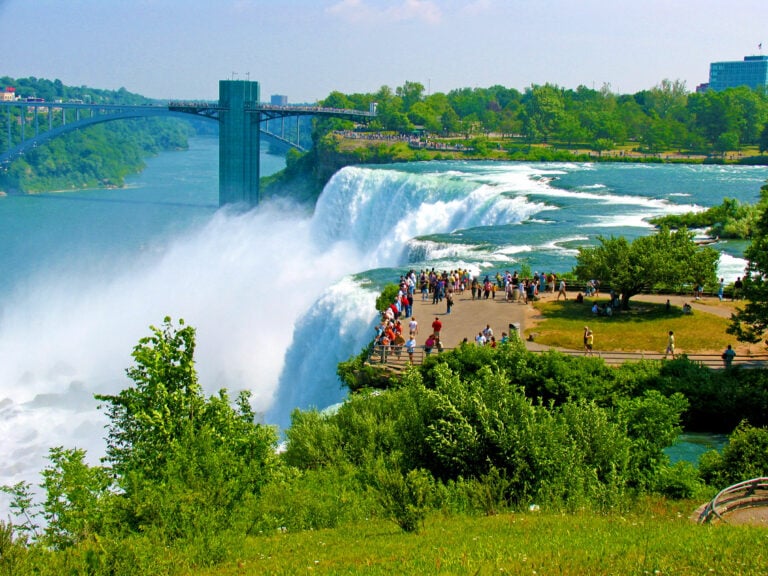Nestled between the roaring waters of the American and Horseshoe Falls, Goat Island stands as a serene haven amidst the thunderous majesty of Niagara Falls. This island, rich in history and natural beauty, offers visitors a unique perspective on one of the world’s most famous natural attractions.
A Journey Through History
The story of Goat Island begins long before it became a cherished part of the Niagara Falls State Park. Originally known as Iris Island, it was later renamed Goat Island by its early owner, John Stedman, who kept a herd of goats on the island in the 1770s. Unfortunately, a harsh winter claimed the lives of all but one of these goats, leaving a poignant mark on the island’s name and history.
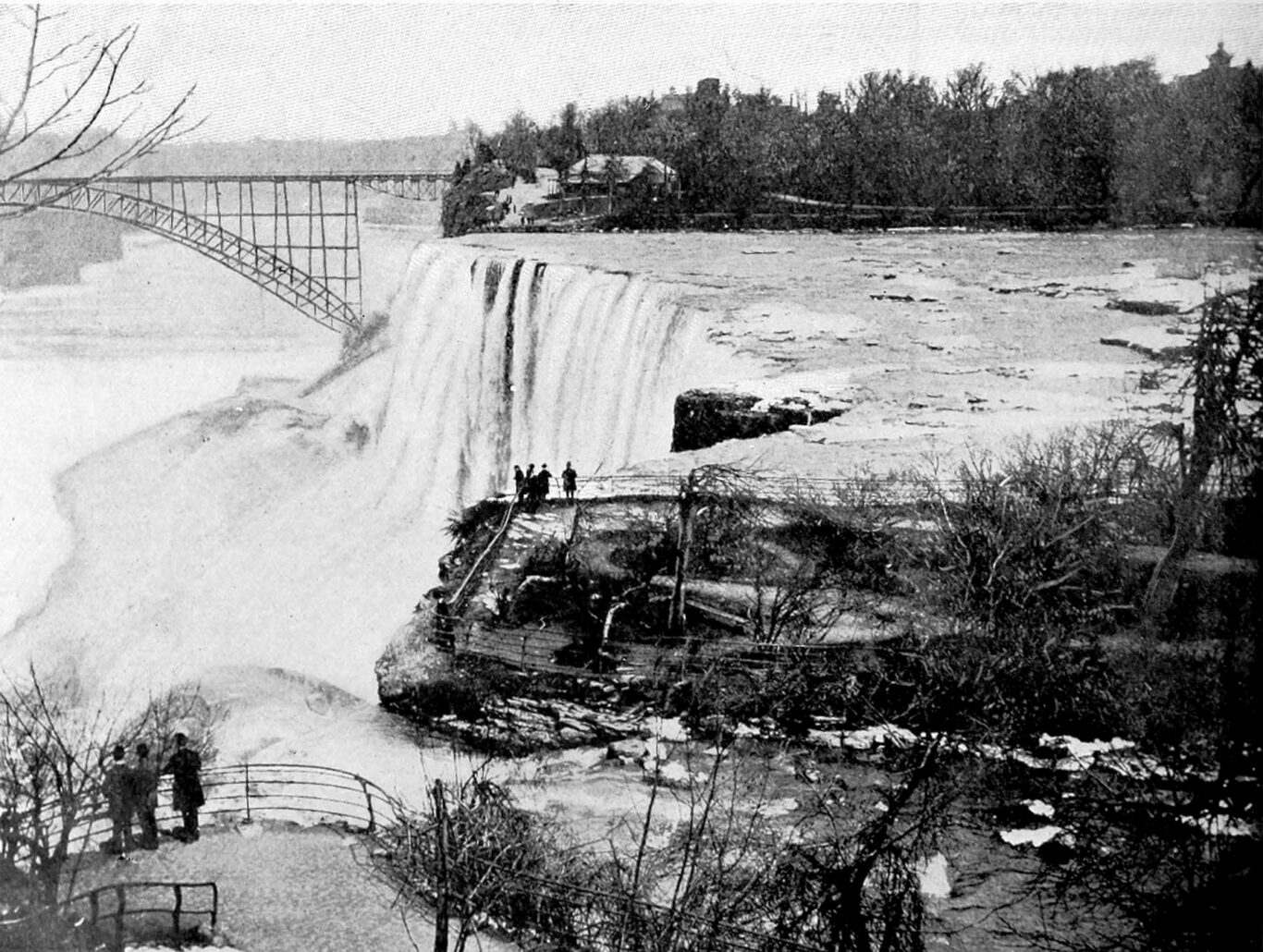
In the early 19th century, the island played a significant role in the development of Niagara Falls as a tourist destination. Augustus Porter, a local entrepreneur, purchased the island and recognized its potential as a natural wonder. He built bridges to the mainland and developed pathways, making it accessible to the growing number of visitors. By the mid-19th century, Goat Island had become a focal point for tourists eager to experience the awe-inspiring beauty of Niagara Falls.
Preservation and Natural Beauty
In 1885, Goat Island became part of the Niagara Reservation, the first state park in the United States. This was a pivotal moment in the conservation movement, spearheaded by visionaries like Frederick Law Olmsted, who believed in preserving natural landscapes for public enjoyment. Olmsted’s influence is evident in the island’s design, which emphasizes natural beauty and accessibility.
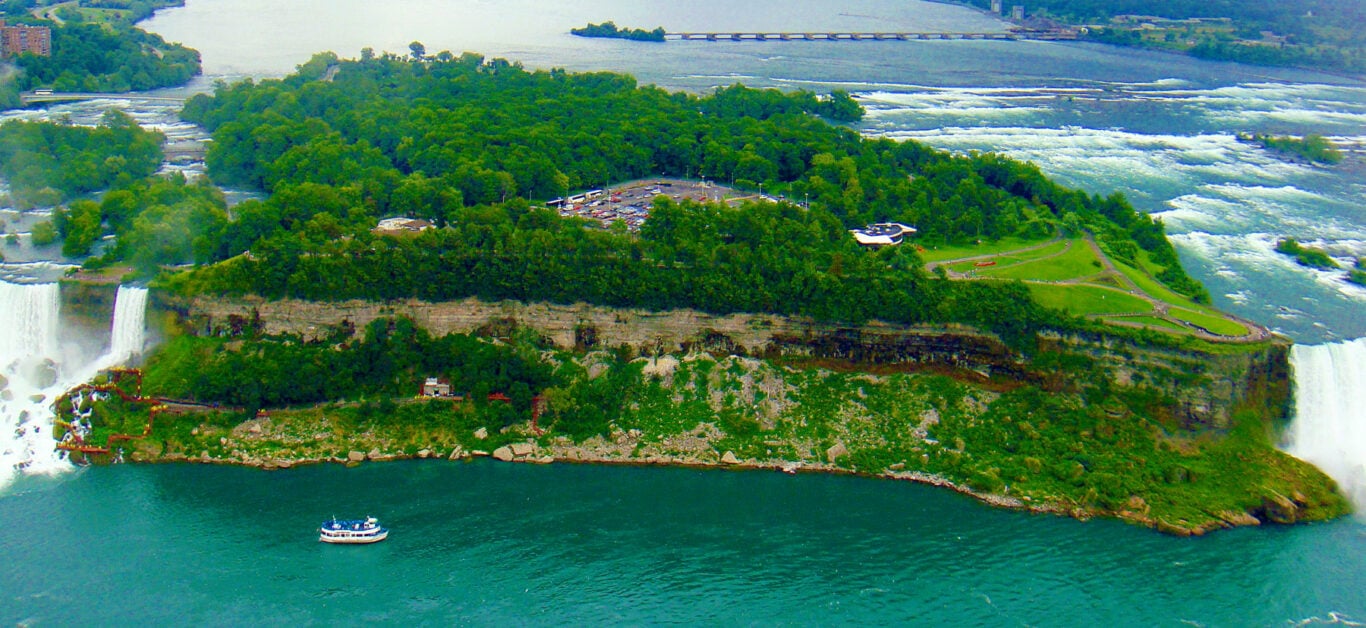
Today, Goat Island remains a testament to these early conservation efforts. Its lush greenery, shaded walking paths, and picturesque views offer a tranquil escape from the bustling tourist areas. Visitors can explore the island’s many attractions, each offering a unique glimpse into the natural and historical significance of the area.
Exploring the Island
- Terrapin Point: This popular lookout spot on the southwestern tip of Goat Island offers breathtaking views of the Horseshoe Falls. It’s a perfect place to witness the power and grandeur of the falls up close, especially during sunrise or sunset.
- Three Sisters Islands: Connected to Goat Island by pedestrian bridges, these small islands provide a peaceful retreat with scenic views of the rapids leading to the falls. The Three Sisters Islands are named after the daughters of General Parkhurst Whitney, a local hotelier in the 19th century.
- Cave of the Winds: For the adventurous, the Cave of the Winds tour offers an exhilarating experience. Descend into the Niagara Gorge and walk along wooden pathways to the Hurricane Deck, where you can feel the full force of the Bridal Veil Falls crashing down around you.
- Tesla Monument: This statue honors Nikola Tesla, whose pioneering work in electricity and hydroelectric power played a crucial role in harnessing the energy of Niagara Falls. Located near the Cave of the Winds entrance, the monument is a tribute to his lasting impact on modern technology.
- Luna Island: Situated between the American and Bridal Veil Falls, Luna Island offers a serene vantage point with unique views of both falls. It’s an ideal spot for photography and quiet contemplation.
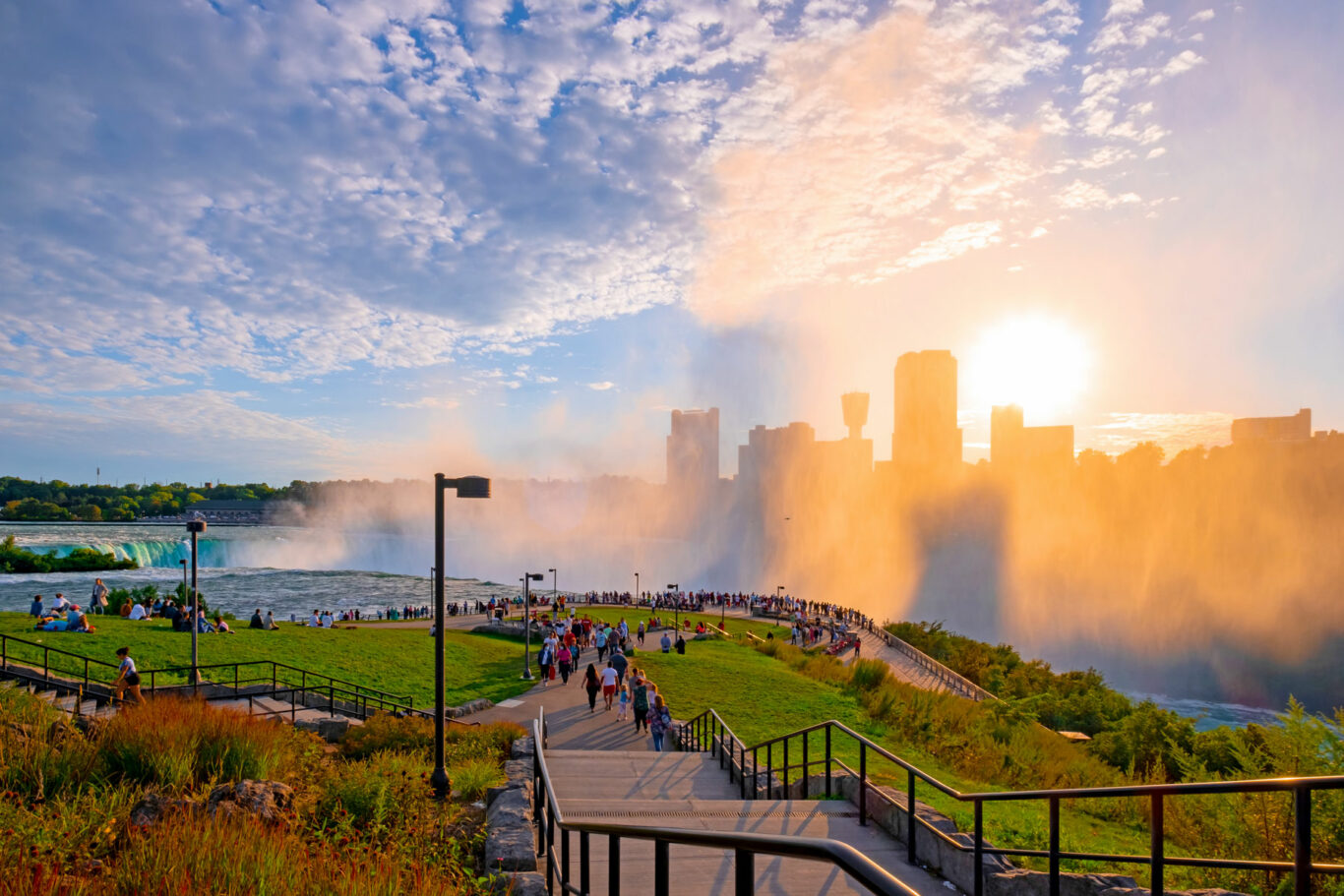
Wildlife and Ecology
Goat Island is not just a historical landmark but also a thriving ecosystem. Its diverse habitats support a variety of wildlife, including deer, squirrels, and numerous bird species. The island’s flora includes a mix of native trees, wildflowers, and shrubs, making it a vital part of the Niagara Falls State Park’s ecological landscape.
Seasonal changes bring different aspects of the island to life. Spring and summer see a burst of greenery and wildflowers, while autumn transforms the island into a tapestry of vibrant colors. In winter, the island offers a stark, snow-covered beauty, with the frozen falls creating a magical, icy wonderland.
The Modern Experience
In recent years, Goat Island has seen several enhancements aimed at improving the visitor experience while preserving its natural and historical integrity. Upgraded pathways, informative signage, and accessible facilities ensure that visitors of all ages and abilities can enjoy the island’s many attractions.
Efforts to balance tourism with conservation continue to be a priority. The island remains a symbol of natural preservation, reflecting the vision of those who fought to protect it over a century ago. Whether you’re a history enthusiast, a nature lover, or simply seeking a peaceful retreat, Goat Island offers a unique and enriching experience.
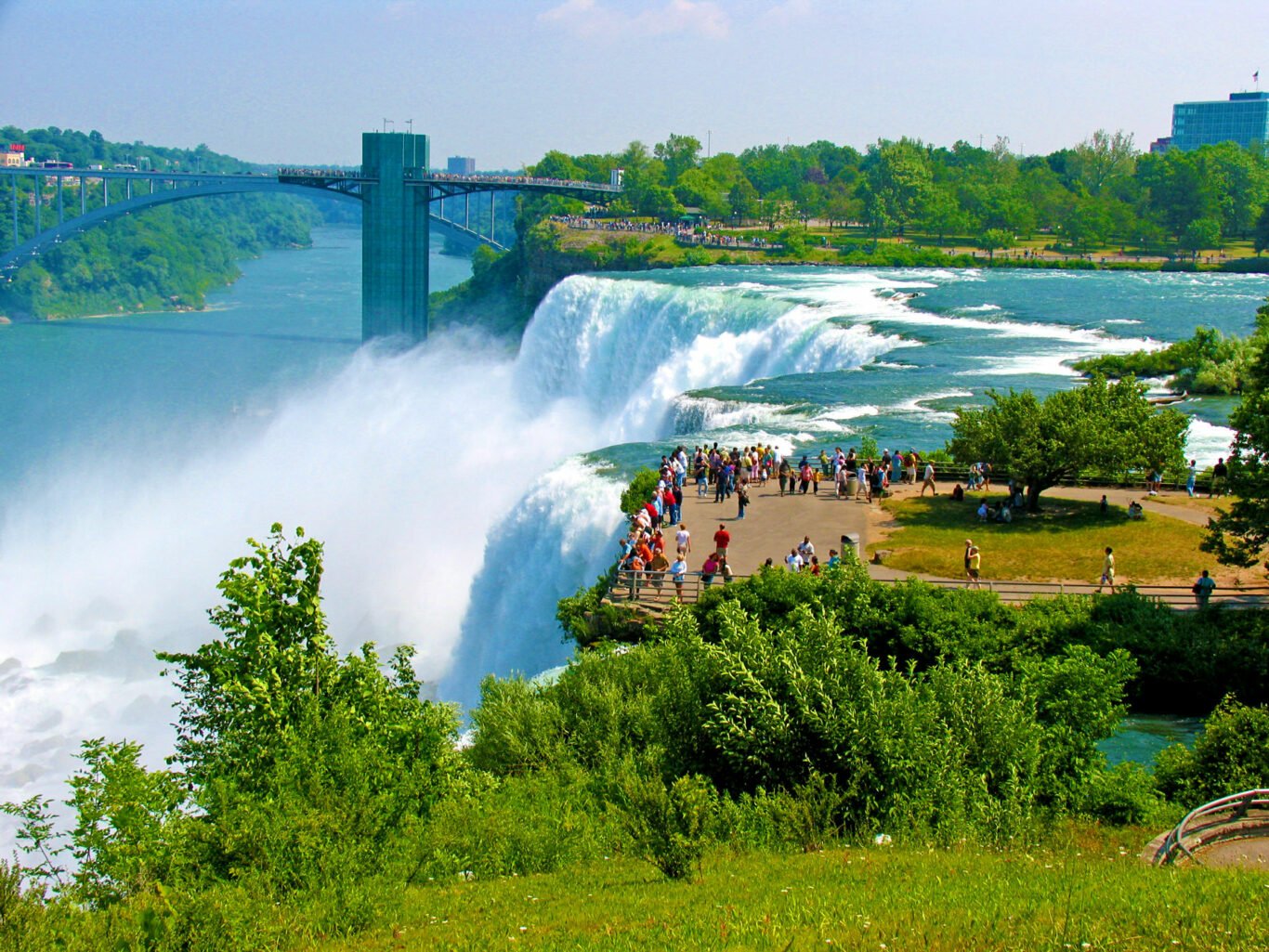
Planning Your Visit
Goat Island is accessible year-round, with each season offering its own unique charm. It is connected to the mainland by two bridges, making it easy to reach from Niagara Falls, New York. There are several parking areas and shuttle services available, ensuring convenient access for all visitors.
While the island can be explored in a few hours, many visitors choose to spend an entire day soaking in the sights and sounds. Pack a picnic, wear comfortable walking shoes, and bring a camera to capture the stunning vistas.
Goat Island, with its rich history and natural splendor, is a must-visit destination for anyone exploring Niagara Falls. It offers a serene counterpoint to the bustling tourist areas, inviting visitors to connect with nature and history. As you wander its paths, pause to reflect on the island’s journey from a secluded wilderness to a cherished part of America’s natural heritage. Whether it’s your first visit or a return trip, Goat Island never fails to enchant and inspire.














